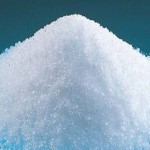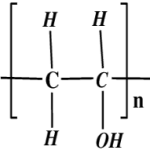Polyvinyl Alcohol SDS of Suppliers Exporters, Manufacturers
Polyvinyl Alcohol
CAS Number: 9002-89-5 USP BP Ph Eur Grade Suppliers Exporters, Manufacturers

Please visit Main Page of Polyvinyl Alcohol USP BP Ph Eur Grade Manufacturers.
Polyvinyl Alcohol SDS, Safety Data Sheet
MSDS Sheet 11-May-22
1. PRODUCT DESCRIPTION
Product Name & Other Names: Polyvinyl Alcohol or Poly(Vinyl Alcohol) or PVA or PVOH.
CAS Number: 9002-89-5
EINECS EC Number: 209-183-3
Relevant uses and uses advised against (if any): Industrial Manufacturing.
Supplier: As per letterhead.
2. HAZARD IDENTIFICATION
GHS, Globally Harmonized System Classification in accordance with 29 CFR 1910
Hazard Class and Category Code(s), Regulation (EC) No 1272/2008 (CLP)
Not a hazardous substance or mixture according to Regulation (EC) No. 1272/2008.
This substance is not classified as dangerous according to Directive 67/548/EEC.
Labeling as per GHS & Regulation EC 1272/2008 (CLP) & GHS
GHS Label Elements None |
Signal Words: None
Precautionary statements:
P261: Avoid breathing dust/fume/gas/mist/vapors/spray.
P262: Do not get in eyes, on skin, or on clothing.
P281: Use personal protective equipment as required.
P302+P352: IF ON SKIN: Wash with plenty of soap and water.
P304+P340: IF INHALED: Remove victim to fresh air and keep at rest in a position comfortable for breathing.
P305+P351+P338: IF IN EYES: Rinse cautiously with water for several minutes. Remove contact lenses, if present and easy to do. Continue rinsing.
P337+313: If eye irritation persists get medical advice/attention.
3. COMPOSITION/INFORMATION ON INGREDIENTS
Product Name & Other Names: Polyvinyl Alcohol or Poly(Vinyl Alcohol) or PVA or PVOH.
CAS Number: 9002-89-5
Molecular Weight: [-CH2CHOH-]n or C2H4O)x
4. FIRST AID MEASURES
Always get medical attention after the first aid is over.
Emergency and First Aid Procedures:
Eyes - Flush with water for at least 15 minutes, raising and lowering eyelids occasionally. Get medical attention if irritation persists.
Skin - Thoroughly wash exposed area for at least 15 minutes. Remove contaminated clothing. Launder contaminated clothing before reuse. Get medical attention if irritation persists.
Ingestion - If Polyvinyl Alcohol is swallowed, if conscious, give plenty of water. Immediately call a physician. Never give anything by mouth to an unconscious person.
Inhalation - Remove to fresh air. Give oxygen if breathing is difficult; give artificial respiration if breathing has stopped. Get medical attention.
5. FIREFIGHTING PROCEDURES
Extinguisher Media: Use media suitable to extinguish surrounding fire. Use water spray, alcohol-resistant foam, dry chemical, or carbon dioxide.
Extinguishing Media Not recommended: Avoid using solid water jet as it may scatter the fire.
Special Information: In the event of a fire, wear full protective clothing and NIOSH-approved self-contained breathing apparatus with full face piece operated in the pressure demand or other positive pressure mode. At high temperatures under fire conditions, it may produce toxic or irritating fumes. Fire-extinguishing work is done from the windward and the suitable fire-extinguishing method according to the surrounding situation is used.
6. SPILL OR LEAK PROCEDURES
Personal precautions, protective equipment, and emergency procedures: Avoid breathing dust/fumes/gas/mist/vapors/spray. Use individual protective equipment (waterproof boots, suitable protective clothing, safety glasses, etc.). Do not approach facing the wind.
Environmental precautions: Do not let the product enter drains, soil, or water sources.
Methods and materials used for containment Cleanup procedures and Storage: Contain spilled material. Do not let the product enter drains. Use a shovel to put the material into a convenient waste disposal container. Finish cleaning by spreading water on the contaminated surface and allow evacuating as per law.
7. SPECIAL PRECAUTIONS
Precautions for safe handling: Apply according to good manufacturing and industrial hygiene practices. Ensure proper ventilation. In case of insufficient ventilation, wear suitable respiratory equipment. Wash thoroughly after handling. Do not drink, eat, or smoke while handling. Avoid contact with skin, eyes, and clothing. Minimize dust generation. Avoid breathing dust/fumes/gas/mist/vapors/spray. Use individual protective equipment (waterproof boots, suitable protective clothing, safety glasses, etc.).
Conditions for safe storage, including any incompatibilities: Store in cool, dry, and ventilated area away from heat sources and protected from sunlight in tightly closed original container. Keep air contact to a minimum. Store protected from heat, sparks and ignition sources and incompatible materials. Do not store with incompatible materials like strong oxidizing agents, strong acids, and bases.
8. SPECIAL PROTECTION INFORMATION
Exposure Limits: This product does not contain any hazardous materials with occupational exposure limits established by the region-specific regulatory bodies. There is a blanket recommendation of 10 mg/m3 for inspirable dusts or mists when limits have not otherwise been established.
Respiratory Protection (Specify Type): None needed under normal conditions of use with adequate ventilation. NIOSH approved equipment should be worn if PELs are exceeded.
Ventilation System: A system of local and/or general exhaust is recommended to keep employee exposures as low as possible.
Personal Respirators (NIOSH Approved): For conditions of use where exposure to dust or mist is apparent and engineering controls are not feasible, a particulate respirator may be worn.
Skin Protection: Wear protective gloves and clean body-covering clothing.
Eye Protection: Use chemical safety goggles and/or full face shield where dusting or splashing of solutions is possible. Maintain eye wash fountain and quick-drench facilities in work area.
Other Control Measures: Maintain good housekeeping in work area. Handle in accordance with good industrial hygiene and safety practice.
9. PHYSICAL DATA
Appearance: Solid material granules, crystals or powder.
Odor: Odor not defined.
Odor threshold: Not available.
pH: 5-7 at 4% water solution.
Relative density: 1.19 to 1.31
Melting Point: 200C - lit.
Boiling Point: Decomposes between 200-250C
Flash point: No data found.
Auto-ignition temperature: No data found.
Decomposition temperature: No data found.
Upper/lower flammability or explosive limits: No data found.
Vapor pressure: No data found.
Vapor density: No data found.
Evaporation rate: No data found.
Flammability (solid, gas): No data found.
Partition coefficient: n-octanol/water: No data found.
Solubility(ies): No data found.
Viscosity: No data found.
Molecular Formula: [-CH2CHOH-]n or C2H4O)x
10. REACTIVITY DATA
Stability: Polyvinyl Alcohol is stable
Conditions to Avoid: Heat, humidity, Dust generation.
Incompatibility (Materials to Avoid): Strong oxidizing and reducing agents, Strong acids and bases.
Hazardous Decomposition Products: Carbon monoxide, carbon dioxide
Hazardous Polymerization: Will not occur.
11. TOXICITY DATA
Acute toxicity:
LD50 Oral - rat - > 20.000 mg/kg
LD50 Dermal - rat - > 20.000 mg/kg
Carcinogenicity: No component of this product present at levels greater than or equal to 0.1% is identified as possible or confirmed human carcinogen by IARC, ACGIH, OSHA and NTP.
Teratogenic Effects: No data found.
Mutagenic Effects: No data found.
Developmental Toxicity: No data found.
Reproductive Effects: No data found.
12. ECOLOGICAL DATA
Toxicity to fish: LC50 >1000mg/liter over 48 hours exposure on killfish.
Toxicity: Avoid release into the environment. Runoff from fire control or dilution water may cause pollution.
Results of PBT and vPvB assessment: This substance/mixture contains no components considered to be either persistent, bioaccumulative and toxic (PBT), or very persistent and very bioaccumulative (vPvB) at levels of 0.1% or higher.
13. DISPOSAL INFORMATION
Waste Disposal Methods: Dispose Polyvinyl Alcohol in accordance with all applicable Federal, State and Local regulations.
14. TRANSPORT INFORMATION
DOT USA, TDG Canada & ADR/RID Europe: Not controlled.
IMDG/IMO: Not controlled.
ICAO/IATA: Not controlled.
15. REGULATORY INFORMATION
USA:
California Proposition 65:
Chemicals known to cause cancer: Substance is not listed.
Chemicals known to cause reproductive toxicity for females: Substance is not listed.
Chemicals known to cause reproductive toxicity for males: Substance is not listed.
Chemicals known to cause developmental toxicity: Substance is not listed.
16. ADDITIONAL INFORMATION
DISCLAIMER: The information and recommendations set forth herein are presented in good faith and believed correct as of the date hereof. It is compiled from various sources, and it is not necessarily all inclusive nor fully adequate in every circumstance. In addition, these suggestions should not be confused with nor followed in violation of applicable laws, regulations, rules, or insurance requirements applicable. This SDS MSDS sheet is intended only as a guide to the appropriate precautionary handling of the material by a professionally trained person using this product. Individuals receiving the information must exercise their independent judgment in determining its appropriateness for a particular purpose. This shall not constitute a guarantee for any specific product features and shall not establish a legally valid contractual relationship. In no case shall our company be liable to loss or damages by the product user.

Please visit Technical Data Sheet of Polyvinyl Alcohol USP BP Ph Eur Grade Suppliers.
Polyvinyl Acetate CAS Number 9003-20-7 & Polyvinyl Alcohol CAS Number 9002-89-5 Supplier Exporter, Manufacturer:
Annie Chemie P Ltd
Mumbai 4000010, INDIA
With Agents and offices in UAE, USA, Europe.
e-mail: info@anniechemie.com
Copyright and Usual Disclaimer is Applicable.
June 1, 2025
Exporters to USA, Canada, UK, Europe, UAE, Nigeria, Algeria, Turkey, Mexico, Brazil, Chile, Argentina, Australia, Dubai etc.
Perfection is made up of small things and that is a big thing.
